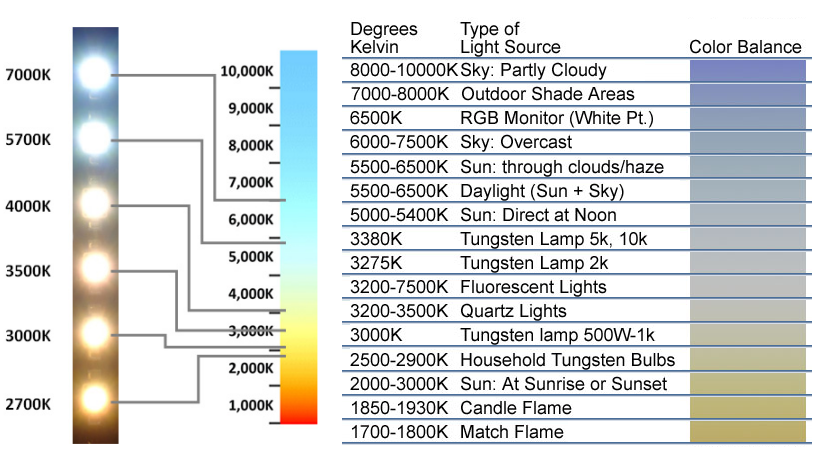Light Color Temperature
Color temperature is a measure of a light source radiating color when illuminated, and is measured in degrees Kelvin. The higher the number, the whiter and then bluer, the color.
"Temperature" in this context refers to "appearance" rather than a thermal property for the touch sense. It is simply a way to describe the color characteristics of light, usually either warm (yellowish) or cool (bluish.
The color temperature of a light source is the ideal black-body radiator that radiates light of comparable hue to that of the light source. When a so called black body radiator such as a lamp filament is heated, the filament will begin to glow. As the temperature of the filament increases the color of the light emitted will shift from one end of the spectrum progressively to the other. Color temperatures over 5,000K are called cool colors (bluish white), while lower color temperatures (2,700–3,000 K) are called warm colors (yellowish white through red). This relation, however, is a psychological one in contrast to the physical relation implied by Wien's displacement law, according to which the spectral peak is shifted towards shorter wavelengths (resulting in a more blueish white) for higher temperatures.
